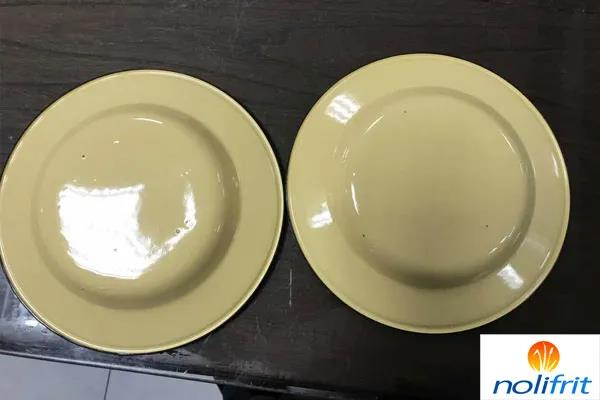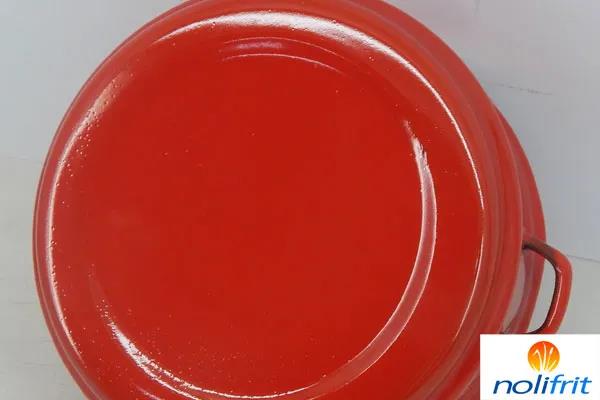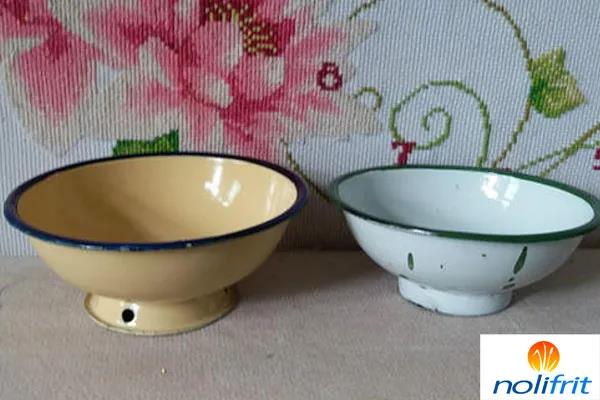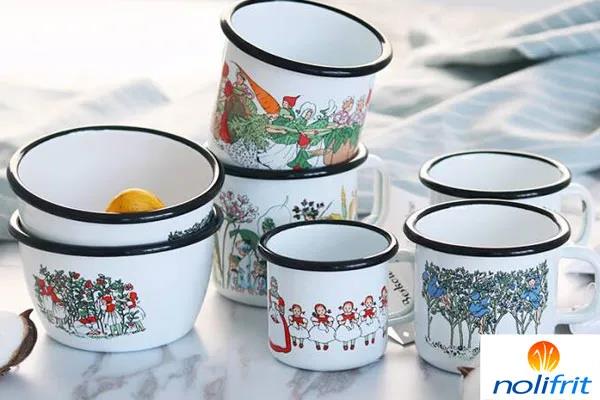Defect Analysis of Enamel Products - Spots
In the previous part, we analyzed the causes and solutions for the defects of the strain line. However, spot defects are more common in the enamel layer. This type of defect mainly refers to the heterochromatic points or bumps on the porcelain enamel surface. There are many forms of spot defect, mainly including burnt spots, pocking spots, boiling spots, copper heads, particles on the ground coat, and boiling points, dark spots, different colors, and rust on the cover coat. In this article, Nolifrit let everyone to understand the causes of spot defects.
1. Burnt spots
There are three reasons for the formation of slag-like spots on the enamel layer: 1. Due to the low density of the enamel slurry, the ground coat is too soft, uneven coating, or over firing, the enamel layer is too thin and scorched. 2. Excessive melting of the ground coat(homogenization, lower softening point, intolerant of firing) 3. The surface treatment of the steel substrate is not clean.
2. Pocking spots
Small pits on the surface of the porcelain enamel layer(not scorched). There are three reasons for its formation: 1. Insufficient rinsing in the process of acid pickling neutralization, and there is residual acid on the steel substrate. 2. Excessive addition of magnesium sulfate (precautionary measures: partial replacement with sodium nitrite or sodium carbonate). 3. The drying temperature is low and the drying speed is slow.

3. Boiling spots
There are lightless or discolored spots on the surface of the porcelain enamel layer. The reason for its formation: oil mixed with organic impurities on the substrate or in the enamel slurry (precautionary measures: For a small amount of general organic matter, enameling with potassium chlorate, for gloves and woven bags fall into the ball milling machine and be ground into flocculent impurities, pass it through 80 mesh sieve).

4. Particles (Miscellaneous)
There are four main reasons for the formation of the rough granular protrusions on the surface of the porcelain enamel layer: 1. The milling ball stone fragments are mixed in enamel slurry. 2. The enamel slurry for cast iron enamel is mixed with emery or steel shot (preventive measures: thoroughly remove the residual sandblasting particles in the hollow cavity of the gas stove head with small holes around it before coating). 3. Slag drop from the firing furnace. 4. There are oxide scale falling off in the burning rack (precautionary measures: regularly clean the transmission chain and hanging basket. Soak the burning rack in lime water).

5. Different colors
The cover coat enamel powder layer is partially covered with enamel powder of other colors, different-colored spots and other stains appeared after firing. There are seven reasons for its formation: 1. The cover coat enamel powder to be fired is contaminated. 2. The transparent enamel slurry drips on the porcelain enamel surface outside the pattern, such as spray gun drip. 3. There are drips of sweat or sugary drinks, fingerprints, and glove marks on the porcelain enamel surface. Black fingerprints and glove marks are especially obvious on the red cast iron enamel. 4. The soluble salt in the enamel slurry is concentrated in the thick powder layer during drying. 5. There is a lot of enamel powder on the burning rack, hanging basket, and boom (preventive measures: regular shot blasting) 6. The two enamel slurries are easy to contaminate each other when the inside and outside are separate coated. 7. Improper spraying operation of multi-pattern decorations, mainly because the pattern is not washed in time and the pattern is deformed.
